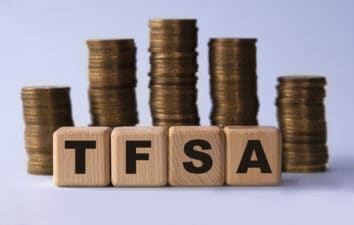What is the first thing that comes to mind when you hear dividend stocks? A company with significant capital investment to deliver goods and services that generate regular cash flows. You might already have a portfolio of energy, bank, telecom, real estate investment trust, and utility stocks. All these companies have significant debt on their balance sheets but have equally strong cash flows to service the debt and pay dividends.
Here is a diamond among the traditional dividend stocks yielding 5.9% that has the potential for capital appreciation.
A diamond among traditional dividend stocks
There are operating companies and holding companies. Operating companies have revenues and expenses and perform business to cater to consumer needs. Holding companies have shareholding interests in these operating companies. Operating companies report net earnings attributable to shareholders, which is the income of holding companies. Most holding companies are growth stocks. Hence, you rarely see their mention in the dividend category.
But one holding company, Power Corporation of Canada (TSX:POW), has been paying a dividend since 1998. It has even increased the dividend at a compound annual growth rate of 5.7% in the last 19 years.
What makes POW a dividend diamond in the rough?
Power Corporation of Canada holds controlling interest in several financial services companies across North America, Europe, and Asia. Its core holdings are in insurance, retirement, wealth management and investment businesses. It is building a portfolio of alternative asset investment platforms and entering progressive markets like FinTech through its subsidiaries.
- Power Corporation of Canada earns over 80% of its earnings from Great-West Lifeco, a financial services holding company that has been growing its dividend since 2014.
- Power Corporation of Canada’s next big earnings generator (20%) is wealth and asset management company IGM Financial, which has been paying a dividend regularly since 2002.
The higher contributions from these stocks make Power Corporation of Canada a dividend stock you might want to own. The company passes on some of its dividend income to its shareholders. Don’t worry about the change in POW’s earnings, as that is its share in the earnings of companies it holds. POW’s liability is limited to its shareholdings in those companies.
Stocks of Lifeco and IGM Financial trade on the TSX, which means you can buy them individually. Then why choose POW? POW gives you the benefit of two companies in one, plus exposure to European investment firm Groupe Bruxelles Lambert and alternative asset manager Sagard, which invests in real estate, private equity, and healthcare royalties. POW is also building a sustainable investing company, investing in Chinese stocks and sustainable energy and food.
POW’s diversified asset base gives you a basket of dividend and growth stocks under one roof. The shareholdings in these companies are its assets. It keeps updating the value of these assets, as per the market value.
How to invest in this dividend stock
POW gives you the benefit of expert management and diversifies your dividend portfolio into a new type of asset class of holding companies. Unlike exchange-traded funds, POW doesn’t charge management fees, and you benefit from any acquisitions the firm undertakes. POW stock is sensitive to the macroeconomic environment, as it influences financial services.
For instance, POW stock lost 58% in the 2007-2009 Great Recession. However, the stock recovered within a year, rallying 63% from its bottom. Between 2008 and 2014, POW did not grow its dividend, as its exposure to the United States reduced its earnings. The company has come a long way since the 2007 crisis. It has developed a more diversified asset base that could help it withstand a recession.
The stock is down 15% from its December 2022 high. It fell 9% in March when the U.S. banking crisis pulled down the financial sector. It is a range-bound stock trading between $28 and $35. The stock is trading above $35, lowering its yield to 5.9%. You can buy the stock when the recession warning reduces the stock price to $31. This way, you can lock in a 7% yield while diversifying your dividend portfolio.








